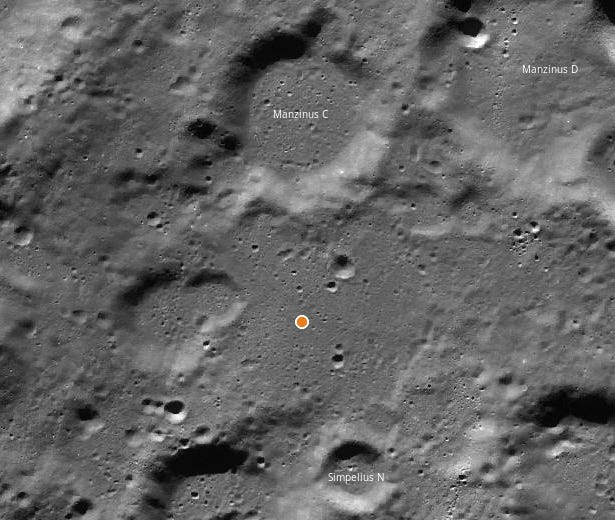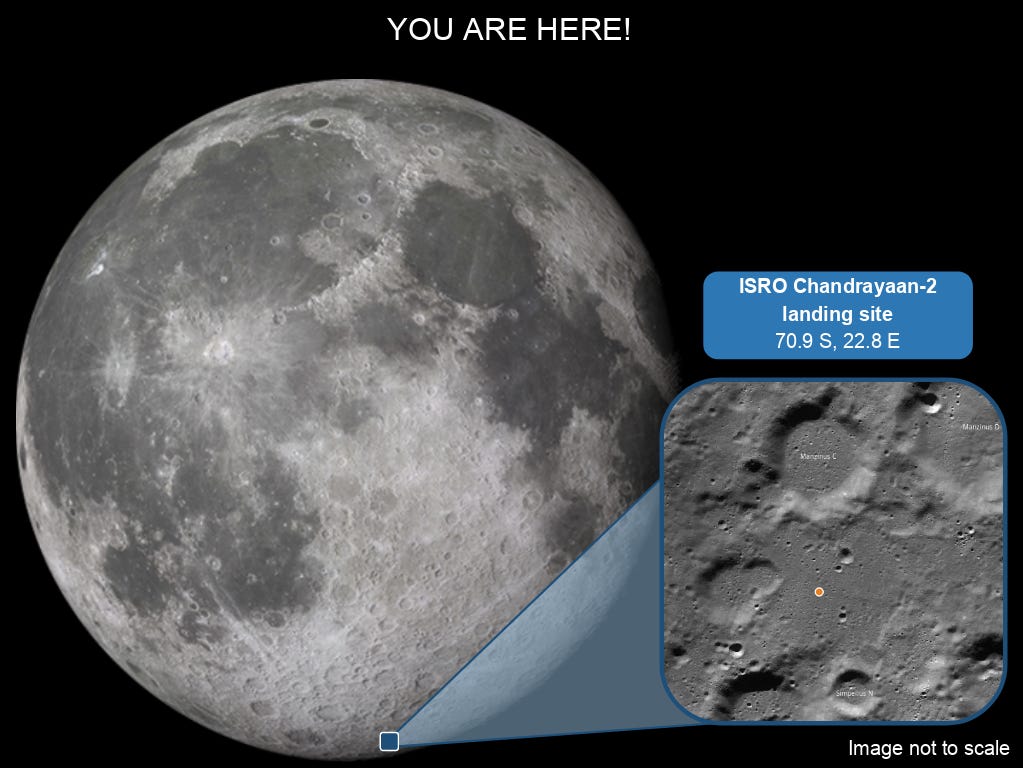Chandrayaan 2 landing site in the southern highlands
Seen here is the targeted landing region for India's first ever soft landing Moon mission, Chandrayaan 2. The spacecraft will launch on July 15, 2019.

Chandrayaan-2's lander will touchdown in the highland (rocky) plain between the craters Manzinus C and Simpelius N. Apart from a number of typical craters, Japan's lunar orbiter Kaguya had identified several ghost craters too in the region. Being a highland, the region's rocks are rich in pyroxene (composed primarily of iron, magnesium and calcium).
In terms of geological age, Chandrayaan-2's landing region is utmost interesting. Using crater size frequency distribution, a method for estimating age of a feature, the region is deemed to be at least 3.8 billion years old. This places the region age at or before the time of the crater-forming bombardments in the Nectarian period (3.85 to 3.92 billion years ago), before Mare Imbrium and other large lunar basins formed.
It is therefore expected that like other highland areas, the landing region contains material ejected by nearby craters formed during the Nectarian period. This is great for the spectrometers onboard Chandrayaan-2's rover, which can characterize the soil and might find pristine materials from the lunar crust. Notably, Chang'e 4 landed in an even older region on the Moon, the South Pole-Aitken basin.
Important: While ISRO has been touting Chandrayaan-2 as a south pole landing mission, it is technically incorrect. Conditions unique to polar areas (including eternally dark regions, long sunlight periods) are prominent 80° onward, not around 70°. So, ISRO's claim of Chandrayaan-2 being the first mission to land in a polar region is wrong. Having said that, Chandrayaan-2 is definitely landing closest to a polar region than any mission so far.

